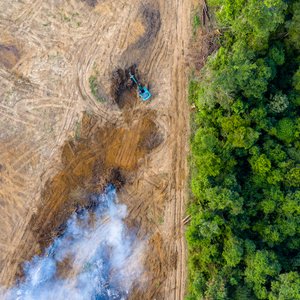NOAA and USDA have released a final report entitled, 'The Future of Aquafeeds,' which details progress toward reducing the need for forage fish in aquaculture feeds. The report contains 20 findings and recommendations as well as seven case studies featuring promising research on and examples of alternatives and how they are being used.
The newly-released report, The Future of Aquafeeds, distills input from researchers, stakeholders, and the public on options for alternative ingredients for aquaculture feeds and suggests areas for future research.
Its findings, recommendations, and directions for research help identify and prioritize new and ongoing efforts to be conducted and funded by NOAA, USDA, and other partners under the ongoing NOAA-USDA Alternative Feeds Initiative.
The Future of Aquafeeds was the product of two experts’ panels that examined the economic, human health, environmental, and practical implications of various alternative feed options. Foreign and domestic scientists with expertise in human health, agriculture, seafood processing, ecosystem services, fish nutrition, physiology, economics, and bio-fuels participated on the panels along with members of industry and environmental groups.
The final report was subject to and incorporates public comment. It was written by scientists at NOAA, USDA, USFWS, and academia.
Select Key Findings of the Report
Fish meal and fish oil are not nutritionally required for farmed fish to grow meaning that even carnivorous fish can be fed diets containing no fish-based ingredients.
Aquaculture is among the most efficient ways to produce high quality animal protein and for human consumption.
The net environmental effects of the production and use of alternate feeds should be considered.
Some options include recovery and utilization of fisheries and terrestrial animal processing waste, the by-products of biofuel production, and numerous crops currently used for terrestrial animal production.
Solutions need to be cost-effective.
Change already is occurring in the feed industry. As fish meal and fish oil prices rise, the feed industry is developing and using other sources of protein and fat.
It really comes down to a couple of key nutrients.
The demand for long chain omega 3-fatty acids for both direct human consumption and feed ingredients is likely to increase beyond the amounts available from marine resources. Fish processing trimmings and marine algae production are two viable options to produce these long chain omega-3 fatty acids.
Download the complete summary of findings
Case Studies from The Future of Aquafeeds
Developing the potential of fish processing byproducts takes guts (download, 3 pages, pdf)
From fish meal-dependent to fish meal-free: feeds research is producing the alternative diets of the future for trout (download, 2 pages, pdf)
Plant based feeds for black seabass show promise (download, 2 pages, pdf)
Shrimp farmers join with researchers to test new diets (download, 2 pages, pdf)
Seaweed farming may be the key for alternative aquaculture feeds (download, 2 pages, pdf)
Research on diets for threatened and endangered fish species held in captivity gains ground (download, 2 pages, pdf)
Soy products and aquaculture are a winning combination (download, 2 pages, pdf)
Download The Future of Aquafeeds
Full Report (93 pages, pdf)
Executive Summary (5 pages, pdf)
Summary of Findings (6 pages, pdf)
Links
NOAA Feature Story on The Future of Aquafeeds







